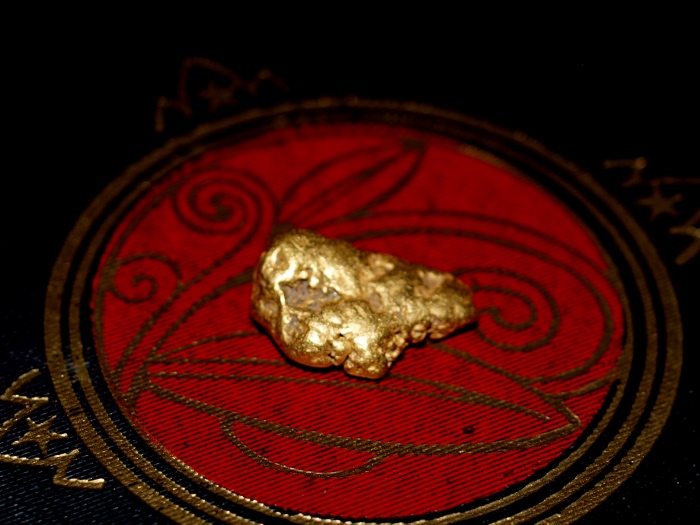
The Vermilion Lake Gold Rush refers to a small and short-lived gold rush that took place in Lake Vermilion, Minnesota.
During the nineteenth century thousands of people flocked to the west to find their fortunes in gold, but in 1865 gold was uncovered in an unpredicted location – in northern Minnesota, just south of the Canadian border.
This discovery largely an unexpected find, because the original survey was supposed to be for iron ore deposits, which was commissioned by Minnesota Governor Stephen Miller.
In 1865 Governor Stephen Miller hired Henry H. Fames, a state geologist to start a geological survey. To help ensure the more thorough study they sought, the governor and legislators asked the geologist before he start his survey, to swear that he would “diligently and faithfully discharge such duties to the best of his ability.”
First Claims of Gold
Initially, the geological surveys confirmed earlier reports of the existence of iron ore, but this did not stir the interest of both the residents or the surveying team members. However, once they described finding veins of gold and silver bearing quartz along Lake Vermilion, the news started spreading across the state like wildfire.
The governor also sent a three-pound quartz sample to the United States Mint at Philadelphia. In mid-September, the mint reported the results of the chemical test found that the quartz sample consisted of $25.63 in gold and $4.42 in silver per short ton.
To verify the results, the governor sent more samples to two other separate labs in New York for testing, and both confirmed the presence of gold.
News and Speculation
The early announcement and repeated dissemination of these chemical tests aroused great enthusiasm. The local newspapers even speculated that the gold-bearing quartz would ‘immediately turn the tide of California emigration to Minnesota.’
Further to heighten the public’s awareness and curiosity, one local news publisher, St. Paul Pioneer sent out a journalist to the new gold fields in Minnesota. During September and October 1865, journalist Ossian Euclid Dodge wrote a series of articles called “Gold Letters” for the paper.
Dodge described in vivid detail the gold veins that he saw, explaining them as:
“The eye beholds bright veins of quartz, lavishly enriched with gold; not in its native State as in California, but more strongly resembling the iron and copper pyrites of Idaho. This quartz is of immense value.”

The Rush was on
Word spread rapidly as other newspapers across the United States picked up the Gold Letters story, and within days gold seekers hoping to entertain a profitable adventure began traveling northwards into the wildernesses of northern Minnesota near Lake Vermilion.
By the end of September, gold companies were founding and equipping for expeditions of the eastern Lake Vermilion shoreline and islands.
Towns quickly formed after that, such as Vermilion City at the Vermilion Falls (Pike River Falls) and Winston City on Pike Bay. As thousands of gold seekers reached Minnesota during the autumn and over the winter, tents were pitched, and structures were hurriedly built up. The people kept coming, offering commercial opportunities and providing comforts for the secluded, hard-working gold miners.
Also Read: Crush & Melt! how to Remove Gold from Rich Ores
From Gold to Iron
It was quickly discovered that Minnesota was much more abundant in iron than gold as miners worked through the ground. Since their aim was gold, the iron was often passed over.
As time passes by, the iron would grow into a more prized commodity to northern Minnesota than the gold. The gold rush quickly faded away as iron mining took over.
The iron mines were kept in operation through the diligence of the miners. Mining was hazardous labor. Many miners lost their lives in mine accidents. Despite the danger, the mines drew immigrants from almost every nation across Europe. Swarms of immigrants were coming to America during the same period as the mines’ opening.
The Minnesotan mines provided earnest work for many immigrants. Most of these jobs were for the uneducated, mostly consisting of manual hard work that required great physical strength.
How the Gold Rush Shaped Minnesota Mining
Without the gold rush of Lake Vermilion, the abundance of iron ores would never have been discovered. Today, Minnesota is the major producer of iron ore and taconite in the United States.
Taconite is a form of low-quality iron ore. When the high-quality natural iron was abundant, taconite was often regarded as an unwanted waste and not utilized. However, after over a century of mining, the iron was starting to run low as nearly all the high-grade iron has been harvested.
Luckily after many years of hard work, a procedure was developed by the University of Minnesota to extract precious iron out of taconite rocks, essentially saving Minnesota’s iron ore mining industry. Substances such as nickel, manganese, copper, and titanium have also been uncovered in minable levels, but are quality is insufficient under today’s prices to be mined profitably.
Expeditions for extra resources, such as zinc, lead, platinum, and diamonds continues today in Minnesota.
The gold rush to Vermilion Lake may have never “panned out” into anything of any real substance in terms of gold, but it is still an important part of the rich mining heritage of Minnesota.
Next: Gold Prospecting in Minnesota

